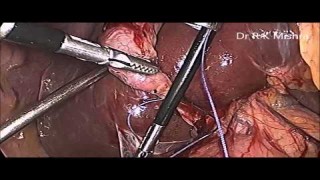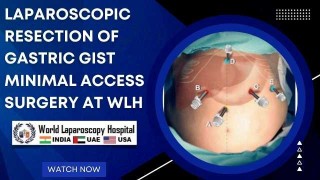Robotic Myomectomy Surgery
Add to
Share
226 views
Report
1 month ago
Description
Robotic myomectomy surgery is a modern, minimally invasive surgical procedure for the removal of uterine fibroids (myomas) while preserving the uterus. This advanced technique uses robotic-assisted technology, offering enhanced precision, flexibility, and control compared to conventional laparoscopic or open surgery. What is a Myomectomy? A myomectomy is a surgical procedure to remove fibroids, which are non-cancerous growths in the muscular wall of the uterus. Women often undergo this surgery due to symptoms like heavy menstrual bleeding, pelvic pain, pressure on the bladder, or fertility issues. Unlike hysterectomy, myomectomy preserves the uterus, making it a preferred option for women planning future pregnancies. Advantages of Robotic Myomectomy Robotic-assisted myomectomy combines the benefits of minimally invasive surgery with robotic precision. Key advantages include: Enhanced Precision: The robotic system provides 3D high-definition visualization and wristed instruments that allow fine, delicate movements. Minimally Invasive: Small incisions reduce scarring, post-operative pain, and recovery time. Faster Recovery: Most patients can resume daily activities within 1–2 weeks. Reduced Blood Loss: Improved control of blood vessels helps minimize intraoperative bleeding. Preserves Fertility: The uterus is carefully reconstructed, allowing future pregnancy possibilities. Better Access: Robotic arms provide greater dexterity in challenging locations of fibroids. How is Robotic Myomectomy Performed? Preparation: The patient is placed under general anesthesia, and small incisions are made in the abdomen. Docking the Robot: The robotic arms are connected to the surgical instruments and camera. Fibroid Removal: The surgeon controls the robotic instruments from a console, carefully excising fibroids while preserving healthy uterine tissue. Uterine Reconstruction: The uterus is meticulously sutured to maintain structural integrity and support fertility. Completion: Fibroids are removed through small incisions or morcellation, and the incisions are closed. Ideal Candidates for Robotic Myomectomy Women with symptomatic fibroids causing pain, heavy bleeding, or pressure symptoms. Women desiring future fertility. Patients with multiple or large fibroids that are difficult to reach through traditional laparoscopy. Women preferring minimally invasive surgery over open abdominal surgery. Recovery and Post-Operative Care Most patients experience mild discomfort managed with pain medication. Early ambulation is encouraged to prevent blood clots. Return to work is typically within 1–2 weeks. Follow-up ultrasound may be recommended to monitor uterine healing. Conclusion Robotic myomectomy represents a revolutionary approach in gynecological surgery, combining the benefits of precision, safety, and minimal invasiveness. With quicker recovery and better preservation of fertility, it is increasingly becoming the preferred choice for women seeking effective fibroid treatment.
Similar Videos






